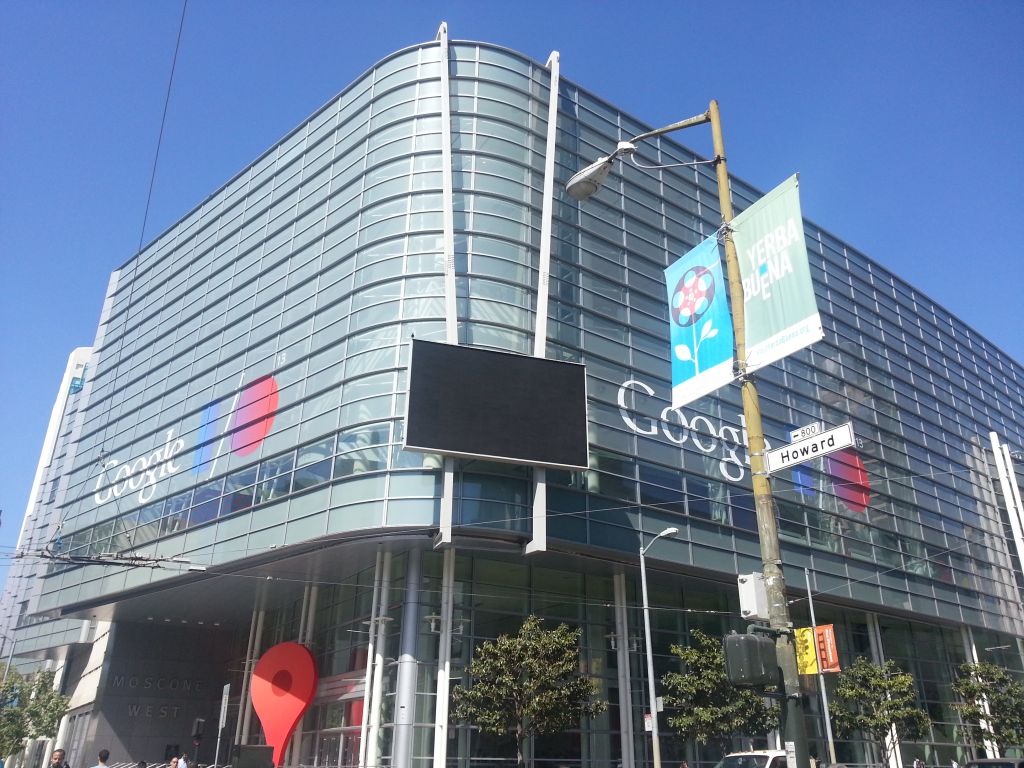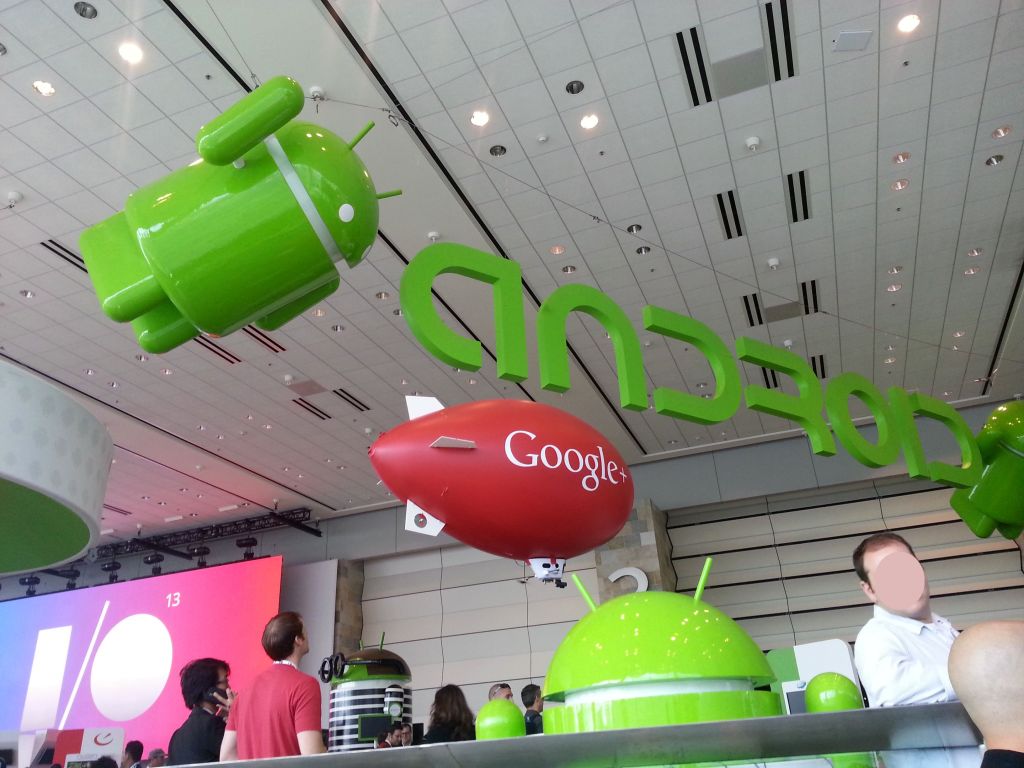
From 15th – 17th of May, the sixth Google I/O conference took place in San Francisco, California and I was one of the lucky guys attending. More then 5500 people, primarily web, mobile, and enterprise developers, attended this annual event. A lot of presentations included announcements of new and exciting technologies, APIs as well as of two new devices.
During the first minutes of the keynote some of Google’s managers announced that by now over 900 million Android devices are activated and that 48 billion apps are installed, which demonstrates that this market is still heavily growing. As the major part of the audience were (app-) developers, these numbers were received quite greatfully and euphoric.
Some of the presentations announced new services as well as new features and designs for existing services like:
- Google Play Music All Access, which makes it possible to stream music legally for a monthly fee (comparable to spotify).
- Underwater Streetview, where Google tries to capture all coral reefs worldwide in order to enable virtual diving.
- The new user interface and features of Google+, which make it easier to use the social network while providing more functionalities (e.g. automated sorting and quality assurance of uploaded holiday pictures).
- Google Maps, which now provides more intelligent localization features for target locations of users as well as clouds hovering over the world in realtime.
- “Sign in with G+” which is a OAuth2 based Single Sign-On that can be used to replace all kind of web authentication mechanisms.
Of course, quite some talks dealt with the privacy critic project Google Glass, that had been introduced at last years I/O. From a technical point of view Google Glass is an interesting project not only due to its new “in-eye-projection” technology. Also the voice interface allows to easily control the device. By saying “OK Glass, take a picture” the user’s actual view is captured and directly uploaded – of course to Google servers. In addition, the integrated navigation system is an interesting feature which enables augmented navigation by means of semitransparent arrows being displayed directly in the users’ field of view. However, there is the other side of the coin: privacy. All data that is captured by the device is processed by Google’s servers. The fact, that one of the responsible Google managers answered the question, in which way Google handles the captured and GPS data, with “in the same way as Google handles all the other data that is collected by our other services”, does not calm at that point. It rather states that when considering Lawful Interception as it exists in almost all countries (and in particular in the USA), Google Glass can turn into a surveillance instrument par excellence. Of course this does not only imply an impact for owners of Google Glass but also for all other people being faced by people wearing Googles new toy. In fact, there is a tiny LED shining while the device is taking a video. However, this can easily be manipulated (e.g. with a sticker) and it is questionable if visibility of this LED is in appropriate proportion to the resolution of the integrated camera. In other words, it is possible to be filmed and photographed while walking in the streets without even being able to notice it. Since Glass is not publicly available so far we have some time left to think about how to deal with this…
All in all Google I/O was a very impressive and informative event. In some kind I felt amazed like a child when I saw all these crazy Android figures hanging around and being surrounded by remotely controlled zeppelins flying through the building.
Have a good weekend
Kevin
P.S.: All talks can be reviewd here.
Continue reading